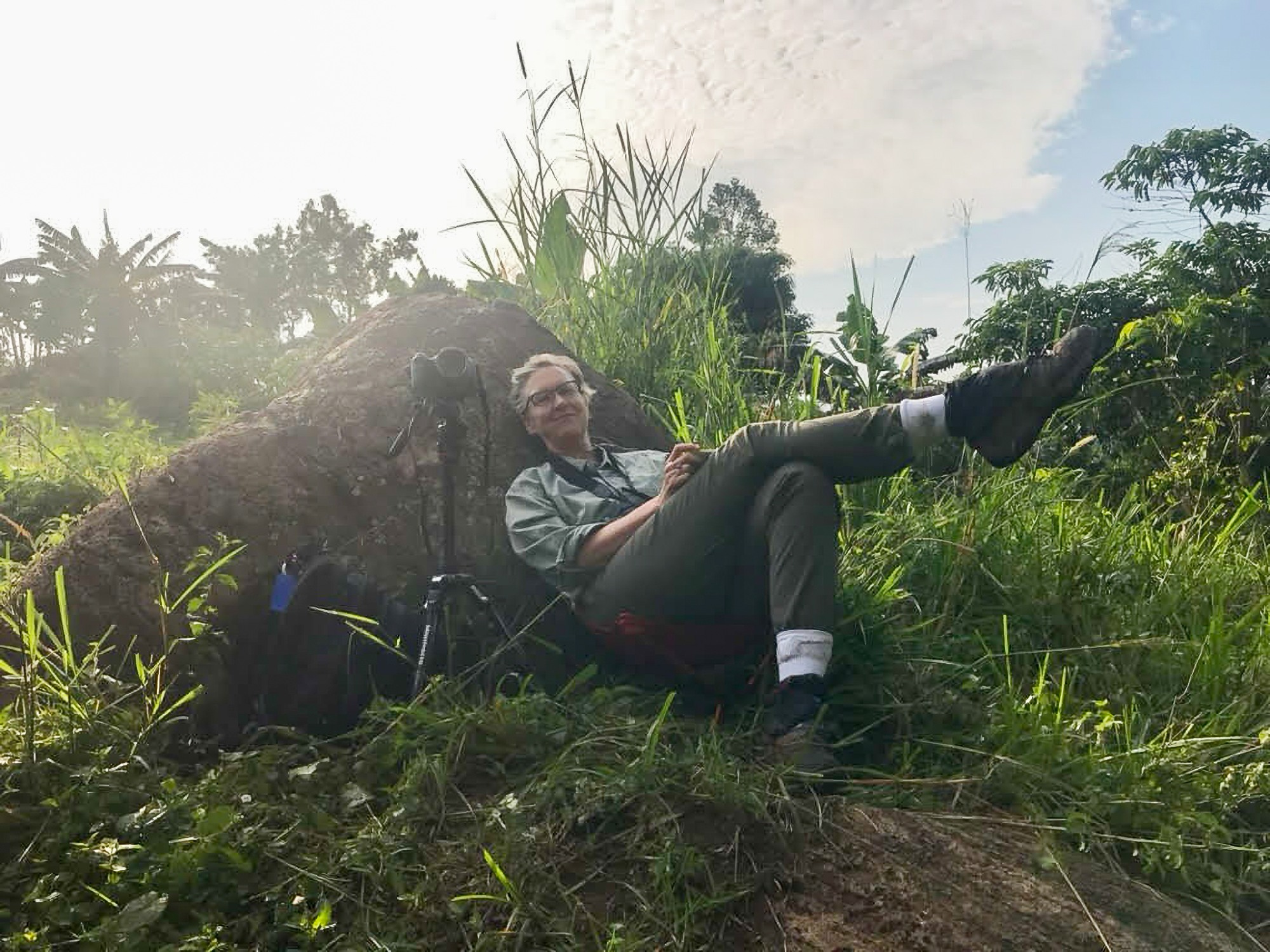PROVIDENCE, R.I. [Brown University] — At a farm in Uganda, Nancy Jacobs stared up into a tree. The sounds of church services and a baby’s cries filled the air, but a different assembly drew her attention: a congregation of grey parrots.
For years, Jacobs had extensively researched and written about the grey parrot, but until that day in 2022, the Brown University professor of history had never been close to the species in its natural habitat. She relished her first chance to watch the birds eat, sing and interact in an oil palm tree.
“It was really important to finally see them and to just sit under this one tree and see these birds acting,” said Jacobs, who is also president of the American Society for Environmental History.

The experience informed research for her forthcoming book, “The Global Grey Parrot,” which will be published by the University of Washington Press, tentatively in 2026. The book will trace the history of the grey parrot from 15th-century sub-Saharan Africa up through its contemporary existence, and explore threats to the species posed by deforestation and the illegal pet trade, she said.
“The book will present more than 500 years of the history of this species, on both intimate and global levels,” said Jacobs, who has taught at Brown for 28 years. “The grey parrot is a smart, vocally gifted and determined species — and now it is as much a commodity taken from the wild or mass-produced in breeding facilities as a forest bird.”
But her scholarly interest in grey parrots extends beyond the birds themselves, as tracing how the species has been traded offers a compelling look at human history, too. A prior book — “Birders of Africa: History of Network,” published in 2016 — explored the cultural history of bird knowledge on the African continent, delving into the complex ways that people perceived and interacted with birds in Africa.
For her current research — which will include another trip to Uganda and Ghana in June 2024 — Jacobs has examined a wealth of historical records, through which she learned that prior to 1455, European exposure to parrots from other continents was limited. The first Portuguese ship to transport enslaved people from sub-Saharan Africa, which set sail in 1455, also carried approximately 150 parrots.
The movement of the grey parrot from Africa is closely linked to the history of economic extraction from Africa, shaping a complex narrative of humans and birds that Jacobs will explore.
“Parrots were a raw material that fascinated Europeans,” Jacobs said.
In the post-colonial period, as traditional economic prospects waned for people living in the forests of west and central Africa, the parrot trade became an attractive alternative, which over time contributed to dramatic declines in the grey parrot population. International trade in grey parrots has been illegal since 2016, but it continues. This has made it challenging for scientists and researchers to study them in their natural environment — something Jacobs has experienced firsthand.
“I went to Kenya to try to see them in the Kakamega Forest, but there were none to be seen,” Jacobs said. Eventually she saw some, at a distance, in Cameroon and Ghana. She noted there are still robust populations deep in the forests of the Congo basin, although they also face threats, including illegal trade, intensive agriculture and deforestation.
